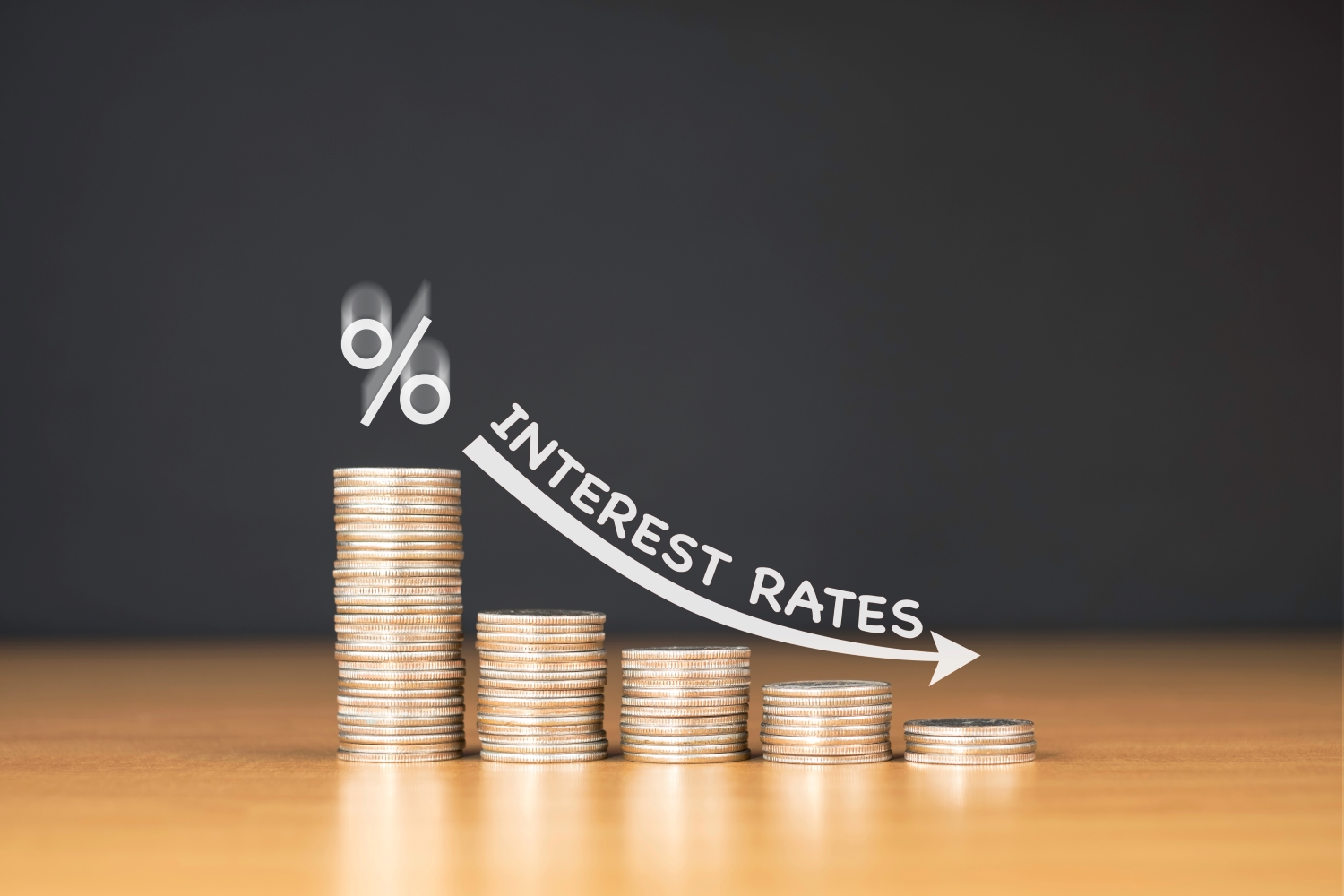In September of 2024, the Federal Reserve announced its first interest rate cut in over four years. According to a press release from the Federal Open Market Committee (FOMC), the reserve rate was cut by half a percentage point, bringing it to a range of 4.75 to 5 percent. The release mentioned that this cut was in response to a cooling job market and an uptick in unemployment. But that begs the question, how does a lower interest rate affect the economy and investment opportunities?
If you’re new to the world of investing, interest rates may seem a bit confusing and complicated at first. However, the better you can understand how these rates work and how they affect your investments, the more you can earn in the long run. Since the Federal Reserve’s decision is already having a ripple effect, let’s take a closer look at interest rates.
How Lower Interest Rates May Affect Investments
Plainly put, an interest rate is the expense of borrowing money. For instance, if you borrow $1,000 with a five percent interest rate. That means you pay back $1,050, even though you only borrowed $1,000. The additional expense based on the interest rate goes to the lender as a service fee.
So, what do high and low interest rates mean for investors? For lenders, high interest rates can be beneficial because they earn more from each loan. For borrowers, low interest rates are best because it costs less to take out a loan.
If you are invested in financial institutions, a rate cut could reduce your return on investment. On the other hand, lower rates may mean more projects can be funded through loans, growing the number of interest-bearing loans to the financial institution.
The stock market reflects the impacts of rate changes almost immediately. Generally, a rate hike causes the market to slow down and dip, while a rate cut causes it to rise. Thanks to the Federal Reserve’s actions, the market has already started to climb. However, the full effects of the cut won’t be felt across different industries for about a year.
Effects of Lower Interest Rates on Different Investment Vehicles
As an investor, it’s good to diversify your portfolio with different investment positions. Lower interest rates can affect each position in unique ways. Here’s a breakdown of what you may expect.
- Bonds – Bonds are generally a safe, low-risk way to earn interest on your money. When buying a bond, you have to pay attention to both the price and the yield, if you wish to sell it prior to maturity because its value may fluctuate as interest rates change. As the price goes up, the yield goes down, and vice versa. When the federal interest range changes, bond yields are affected. Higher interest rates cause bond prices to fall, increasing their yield. So, a lower rate causes the bond price to rise, resulting in a lower yield.
- Real Estate – While demand for single-family homes is still high across the board, lower interest rates will make it easier for buyers to purchase new properties. If you’re trying to invest in real estate, you can take advantage of a lower rate to maximize your return.
- Business Loans and Lines of Credit – A lower interest rate means it’s less expensive to borrow money for business-related projects. Lower rates generally mean investment opportunities become more viable.
- Stocks – Stock markets tends to tick up after the federal interest rate goes down. So, if you have money tied up in stocks, they’ll likely see a boost in capital gains.
Risks and Opportunities for Investors in a Low-Interest Rate Environment
One of the smartest things you can do in a low-rate environment is refinance your loans. Auto loans, mortgage loans, and even student loans can cost a lot less once rates drop, so now is the time to take advantage. While you could wait for another reduction, you don’t want to waste money during the interim. Because the Federal Reserve hasn’t signaled if or when it’ll lower rates again, it may be worthwhile to explore taking advantage of today’s lower rates while you can. If rates were to later increase, you would have locked in that lower rate.
A good strategy to pursue when in a low interest rate environment—or at least lower interest rates than you’re currently paying is to explore reducing your interest expenses. This can improve your cash flow and your debt-to-income ratio (DTI). It may also be a good time to look for new investment opportunities that were too expensive before when the cost of borrowing money was higher. A reason the Fed lowers rates is to boost economic output, so don’t take a “wait and see” approach. If you’re thinking of borrowing money for a new business opportunity and it’s more cost-effective now than it was a few months ago, it may be worthwhile to start your investment project now and go with the developing economic trend than to wait and miss part of that trend.
Adjusting Investment Strategies in Response to Lower Interest Rates
Once you understand how interest rates can affect your investment strategy you can be more proactive about how to invest your money when rates change. Consulting with a financial planner/advisor may be helpful. Are you comfortable navigating the complex terrain of investment opportunities amid fluctuating interest rates on your own? Get in touch with us today to optimally prepare your portfolio for every market condition.



